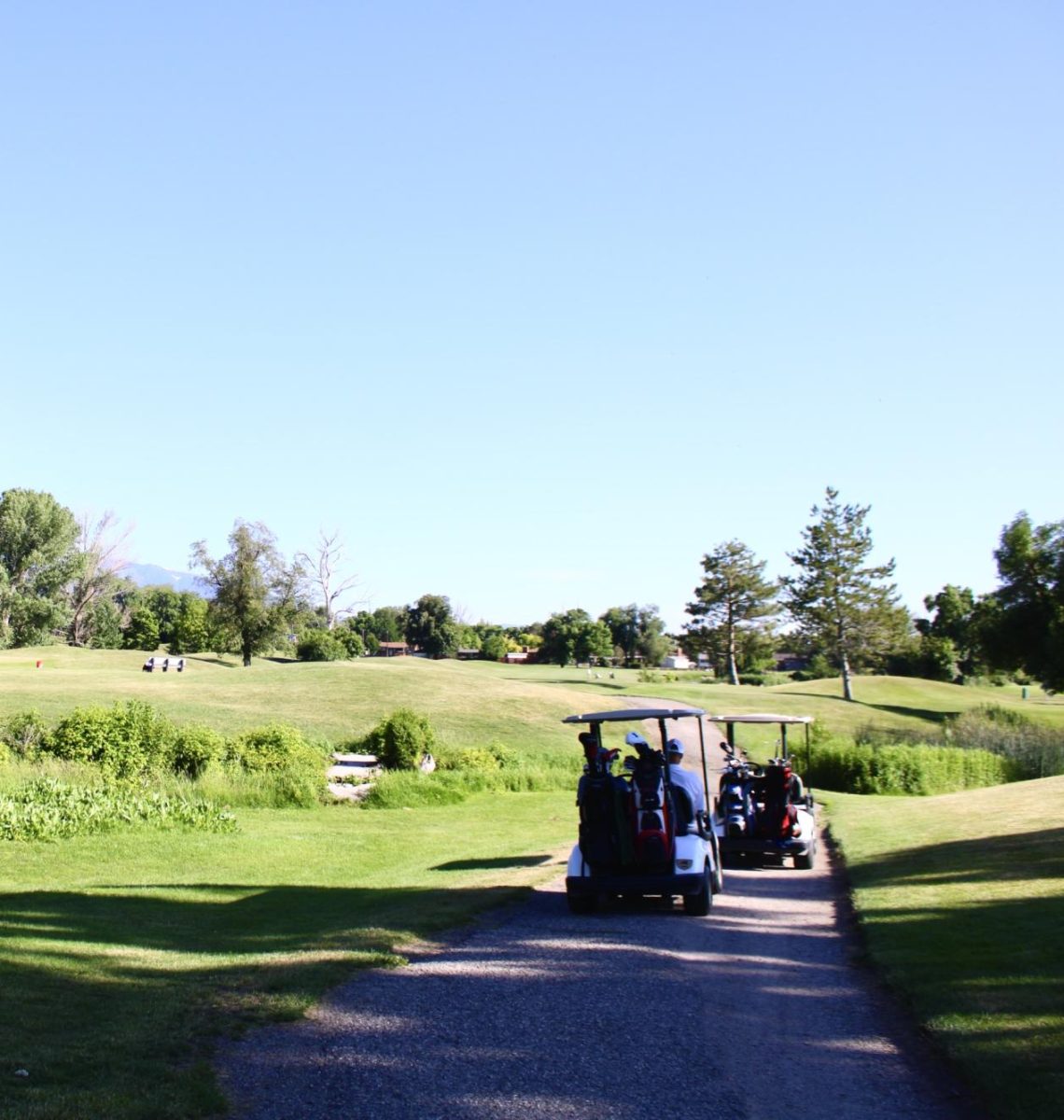Golfing sometimes gets a bad rap. From debates about whether or not golfers are athletes to criticisms that the sport is slow-paced and boring, the game of golf is far more polarizing than other physical activities of its kind.
Despite these debates, arguably the most dividing golf issue does not pertain to the game itself, but rather, the setting wherein the sport is played.
Golf courses have long been criticized for their perceived threat to the environment. As a beacon of lush green even in the most arid of environments, their large size and composition require significant amounts of fresh water to maintain their stunning vibrance.
The issue is further exacerbated in Utah, one of the country’s driest states, averaging about 13 inches of precipitation per year.
In a state where fresh water is already hard to come by, some say golf courses use more than their fair share. A 2021 climate crisis report from the CNN sports staff confirms this reality.
“The 30 or so golf courses in the Salt Lake County of Utah drink up around nine million gallons of water a day to stay pristine green,” CNN’s article reads. “That’s more than 13 Olympic-sized swimming pools.”
While this figure seems otherworldly, Utah golf industry leaders continually downplay its environmental impact. In a 2012 report from the Utah Golf Association, industry leaders claimed the water usage of state golf courses was trivial, shifting blame toward the state’s agricultural industry.
“[Utah golf courses] consume 0.8% of diverted water used for agricultural irrigation; account for 0.65% of total diverted water; and generate significantly higher economic returns [than agriculture] per acre-foot of water used, resulting in much greater economic output, jobs and income for state residents.”
The same UGA report also indicated that 82% of total diverted water consumed in the state comes from agricultural processes, compared to less than 1% used by golf courses. Despite these rather lopsided metrics, golf courses aren’t completely innocent.
For a long time, private golf courses in Utah have taken careful steps to ensure their irrigation data stays private.
A 2023 article from The Salt Lake Tribune shed light on the threatened industry’s actions, particularly opposition to H.B. 188, a bill that “would have mandated transparency around water applied on Utah golf courses.”
While H.B. 188 was shut down by state lawmakers last year, a new proposed bill, S.B. 195, would keep a close eye on golf course water usage. However, even this modified bill is not without its flaws. Fox 13 reporter Ben Winslow broke down S.B. 195, writing:
“The bill would formally track golf course water use in an effort to identify ways to conserve,” he wrote. “Sen. [Dan] McCay is proposing to declare data on golf course water use ‘protected’ under Utah’s public records laws. That means it would not be available for the public to see. Sen. McCay defended declaring it a ‘protected record’ as a way to ensure the bill does pass and said it is no different than data on individual household water use.”
Even with its secrecy, the measure would beckon a significant alteration to the current system of checking golf courses; one that is unquestionably flawed, considering many courses in the state have, according to Winslow, operated for “decades without improvements to their irrigation systems.”
Not all Utah golf courses are continuing their unsustainable use of water, though. Another 2023 Salt Lake Tribune article, from water and land use reporter Leia Larsen, found that “at least 40 of Utah’s golf courses cut use between 2021 and 2022.” While most of these courses are publicly funded and/or state-owned businesses, certain private courses are also taking action.
Utah’s golf industry likely adds millions of dollars to the state economy. The most recent revenue figure, from the aforementioned 2012 Utah Golf Association Economic and Environmental Impact report, found that the golf industry added over $800 million and 9,500 jobs to the state economy. This figure has undoubtedly grown exponentially over time, as golf itself has grown in popularity rapidly in the wake of 2020’s COVID-19 pandemic.
Moreover, Utah is becoming a hotspot for the game. In 2023, development for the Tiger Woods-designed Marcella Club in Summit County, Utah began. The course, which has an estimated completion in 2025, will span over 8,000 total yards and is set to be one of the largest golf developments in state history.
Despite its probable positive economic impact, the construction of Marcella Club once again begs the question: are new golf courses worth their price in precious water and land displacement?

















